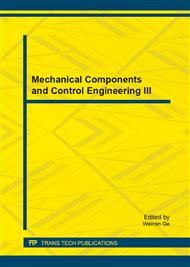p.156
p.160
p.164
p.168
p.172
p.176
p.181
p.185
p.189
Experiment and Numerical Simulation of the Local Loss in Axial Guide Device
Abstract:
In order to determine the pipeline characteristics of the sand-wind simulation system, using the closed wind tunnel system, the partial loss of the fan’s pre-axial guide device was obtained from experiments at different openings. The partial loss of the axial guide device was simulated at different boundary conditions with FLUENT [1]. The simulation and experiment results were compared and a plan of setting reasonable boundary conditions was confirmed. A feasible method of using numerical simulation to predict the characteristics of dusty weather simulation pipeline system was developed.
Info:
Periodical:
Pages:
172-175
Citation:
Online since:
October 2014
Price:
Сopyright:
© 2014 Trans Tech Publications Ltd. All Rights Reserved
Share:
Citation:


